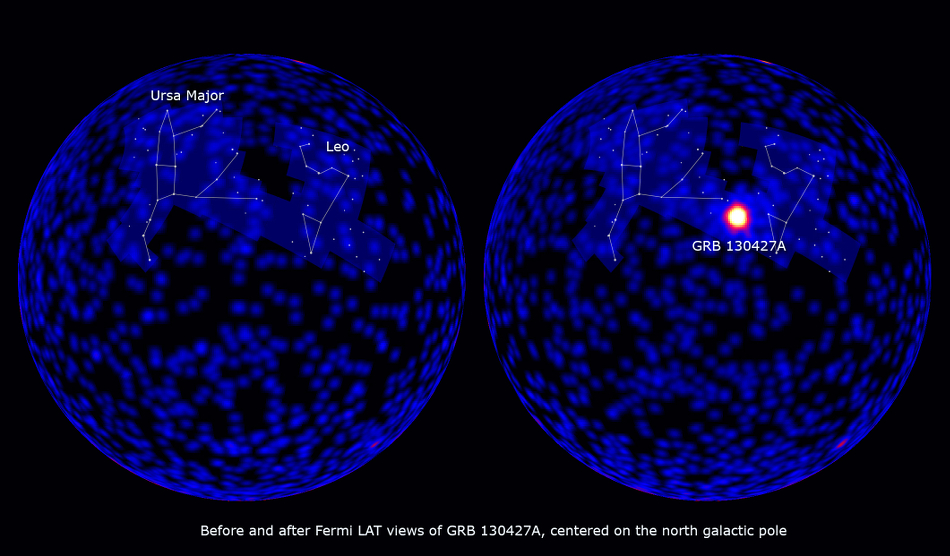
 Credit: NASA/DOE/Fermi LAT Collaboration
Credit: NASA/DOE/Fermi LAT Collaboration
Burst of Knowledge
A definition of luck is preparation meeting opportunity. Last April 27, astronomers were very lucky when one of the brightest gamma-ray bursts occurred at a time when a full complement of gamma-ray and X-ray observatories, including the Fermi Gamma-ray Space Telescope, Swift, and NASA's newest high-energy observatory, NuSTAR, were able to observe it. This capability allowed astronomers to measure the burst's brightness over a range of one million in energy, and enabled astronomers to pinpoint its location using the Large Area Telescope (LAT) on Fermi (shown above), along with the imaging capabilities of Swift (at soft X-ray energies) and, for the first time, at hard X-ray energies with NuSTAR. Gamma ray bursts like the one that occurred on April 27 mark the explosive transformation of a massive star into a black hole, and these new data provide an unprecedented look at this process. Astronomers are using these data, along with optical ground-based data from the RAPTOR telescopes, to create a detailed model of the structure of the shock waves which generate the observed emission.
Published: November 25, 2013
<
HEA Dictionary ● Archive
● Search HEAPOW
● Other Languages
● HEAPOW on Facebook
● Download all Images
● Education ● HEAD
>

Each week the HEASARC
brings you new, exciting and beautiful images from X-ray and Gamma ray
astronomy. Check back each week and be sure to check out the HEAPOW archive!
Page Author: Dr. Michael F. Corcoran
Last modified Tuesday, 27-Feb-2024 10:15:15 EST


